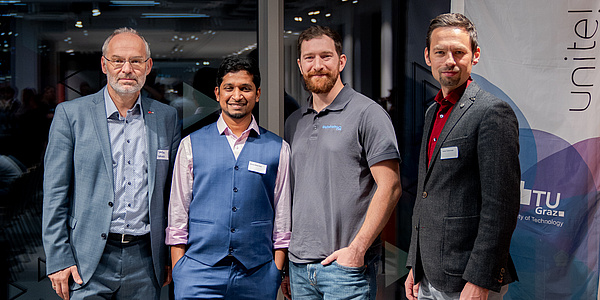Project MNEMONIC: Magnetic Porous Bio-Composites
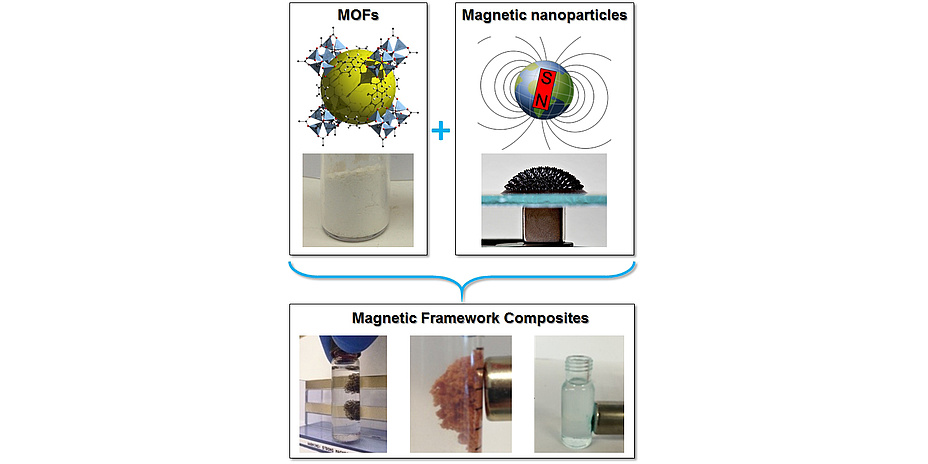
TU Graz’s Institute of Physical and Theoretical Chemistry was awarded a Marie Curie fellowship in 2017 to study the combination of MOFs, magnetic nanoparticles, and enzymes, for the future development of smart bio-catalysts.
MOFs are the latest generation of porous materials. Like space frames in architecture, the resulting network, made of metal centers linked together with organic molecules, contains a lot of empty space, and that is the main reason these crystalline structures are so attractive. Their surface area can extend to thousands of square meters per gram; one tablespoon of MOF can easily cover the same surface area as a soccer field. Thanks to this outstanding property, MOFs can store gases, vapors, and other species in solutions and, depending on the physicochemical properties, separate different compounds. This is having tremendous implications in many fields of applied research involving energy, environment, catalysis, drug research, and device fabrication.
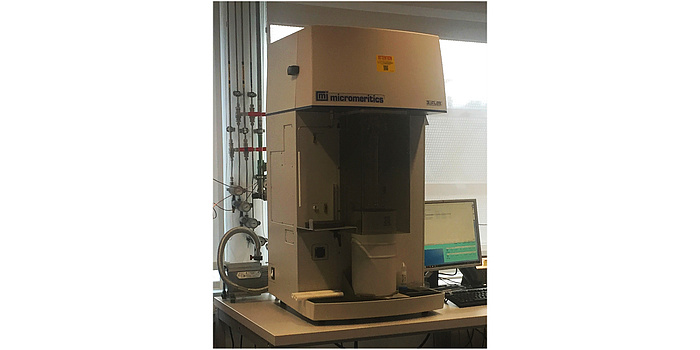
Figure 2: A BET machine is used to investigate the surface area of several materials, among which Metal-Organic Frameworks show the highest values, by filling the pores with nitrogen and measuring the amount that is adsorbed for each pressure point.
My research
One of my research topics dates back to the postdoctoral period at CSIRO in Melbourne, Australia, and involves the combination of magnetic nanoparticles and MOFs. Embedding nanoparticles into MOFs is easier than researching a specific porous material because it unifies the properties brought by the single components. In the case of magnetic systems, there are two main reasons behind this: dynamic localization and hyperthermia treatment. Dynamic localization means the possibility to externally control the position of the material, for example in a reactor or, in a more specialized way, in a microfluidic device. This would overcome most of the issues arising from the immobilization and growth of MOFs in the desired positions of a system.
Indeed, thanks to the action of a magnet, MOF crystals or powders can be simply located where needed, and also recovered afterwards. Hyperthermia treatment involves the use of high temperature to kills cells, especially for cancer cures. When superparamagnetic nanoparticles, prepared with a specific size, are immersed in an alternate magnetic field, they can increase the temperature several tens of degrees, in this way literally “burning” the tumor. Applied to MOFs, this can trigger on demand the release of drugs previously stored within the porous material, especially in cases when nonspecific drugs cause discomfort to the patient due to their indiscriminate cytotoxicity.
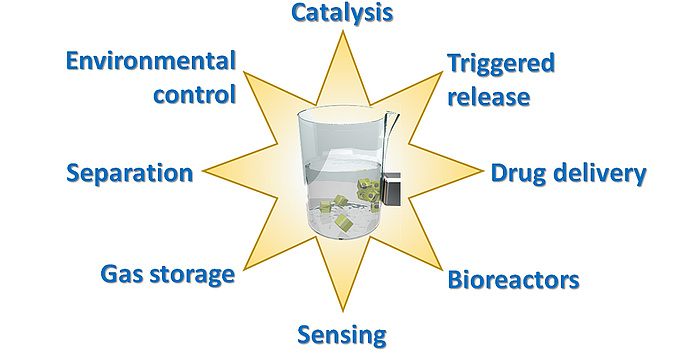
Figure 3: MFCs are suitable for several applications, for example as reusable catalysts, recyclable sorbents for environmental control, and as efficient drug delivery species.
In the team I was working in, I studied the possibility of using magnetic MOF composites for pollution control, discovering that an aluminiumbased system with iron oxide nanoparticles could be used to harvest toxic lead ions with an uptake approaching 0.5 grams of lead per gram of composite, one of the highest figures among similar materials. Additionally, the system could release the ions in water by means of the above-mentioned magnetic field process.
In the same period we discovered that MOFs can also host biomacromolecules, either a protein or a piece of DNA, in a process that we called “biomimetic mineralization”, because it resembled a natural process in which soft organisms protect themselves from predators or inhospitable conditions by means of a hard, and mostly inorganic, shell. This research, published in 2015, used only aqueous solutions and thus was more compatible to biological systems than the methods available at the time using organic solvents. Moreover, the reaction is very fast in this way and can be applied to a wide range of systems, such as proteins, enzymes, nucleic acids, and even living cells.
The MNEMONIC project
At Graz University of Technology, working in the group of Paolo Falcaro, I started thinking about how to combine the previously gained knowhow into one successful project. I was awarded an initial funding from the Research and Technology House to start planning future activities, and this eventually developed into the recently granted Horizon 2020 Marie Curie project MNEMONIC (acronym of “MagNetic Enzyme Metal OrgaNIc framework Composites”). The aim is to produce efficient, long-lasting, robust, and repositionable bio¬catalysts. The porous MOF coating protects an enzyme from organic solvents, unfavorable pH, the presence of inhibitors, while permitting a selective exchange of substrates and products through the cavities. At the same time, the magnetic particles permit the system to be placed in specific locations, for example into the channels of a microfluidic device. This simple but innovative ternary system aims to satisfy the requirements for recyclable and robust catalysts which are as highly selective as enzymes can be, are suitable in batch and in continuous industrial processes, and produce chemicals with high yield, especially in the enzymatic production of APIs (Advanced Pharmaceutical Ingredients).
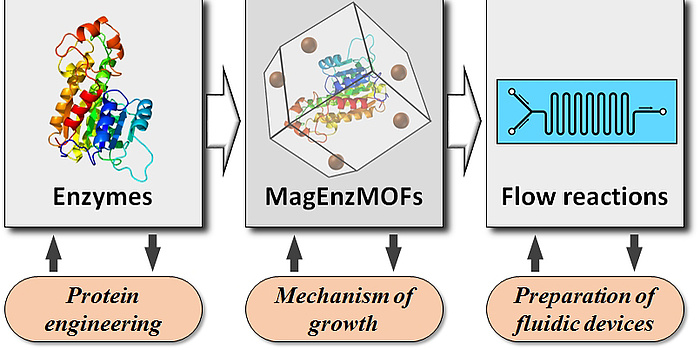
Figure 4: The MNEMONIC project will study the combination of enzymes with magnetic nanoparticles and MOFs. These ternary systems (MagEnzMOFs) will be integrated into fluidic devices for the continuous production of specialty chemicals.
Of course, there are several other research topics, and many aspects still under investigation, in this field. Nevertheless, MOF research is increasingly fascinating and trending more and more every year. This had a recent positive outcome with the recently kicked-off lead project Porous Materials@Work with which the MNEMONIC grant is interconnected. Our team, also a key component of the Porous Materials@Work and further endowed with Paolo Falcaro’s ERC grant, is currently composed of three postdoc researchers and one PhD student. All these positions were internationally advertised and gained a wide response from many qualified applicants, a clear indication of the attractiveness of TU Graz for early stage scientists from around the world.
Kontakt
Raffaele RICCO
Dr. Dott.
Institute of Physical and Theoretical Chemistry
Stremayrgasse 9/I
8010 Graz
Phone: +43 316 873 32212
raffaele.ricco@tugraz.at


